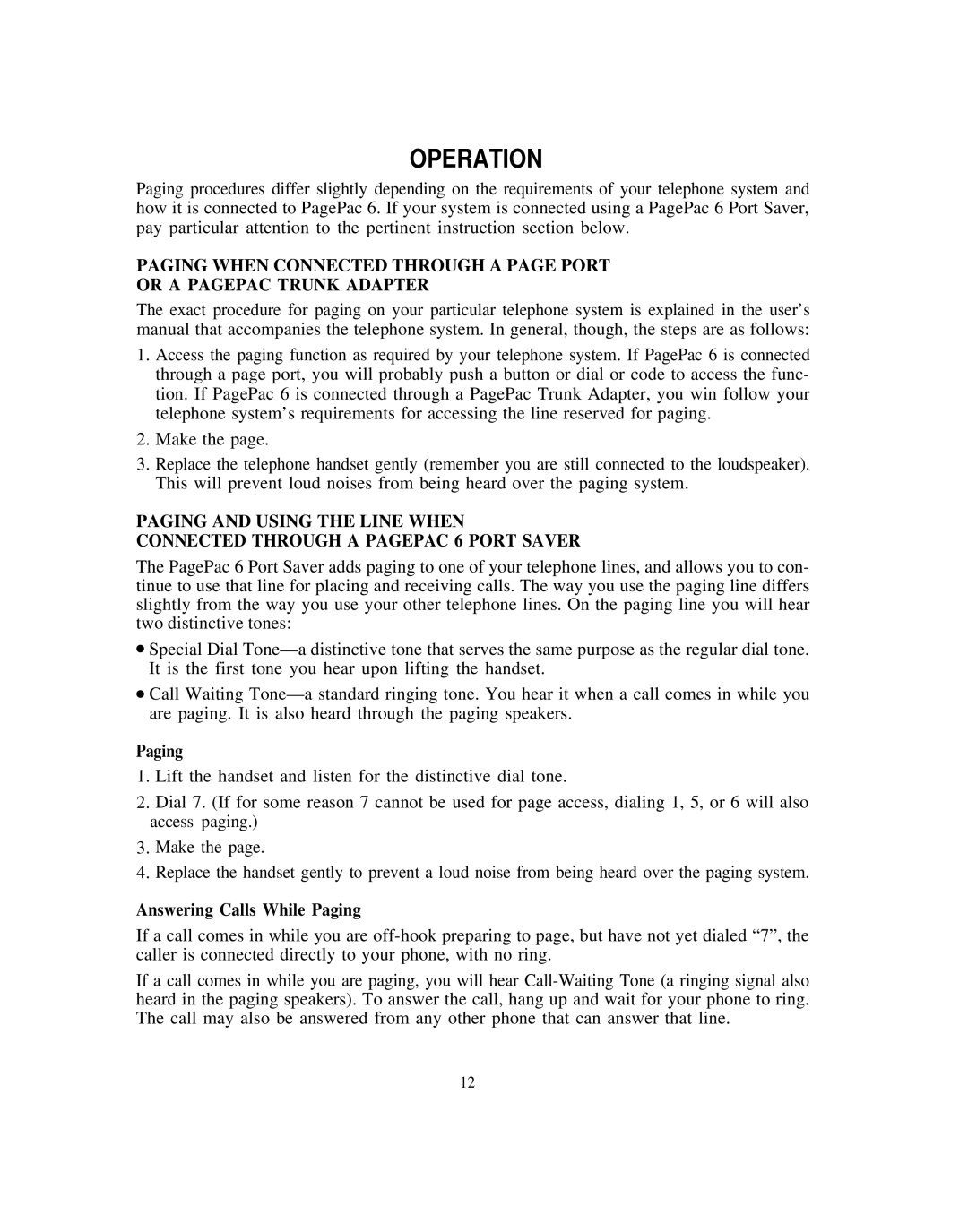OPERATION
Paging procedures differ slightly depending on the requirements of your telephone system and how it is connected to PagePac 6. If your system is connected using a PagePac 6 Port Saver, pay particular attention to the pertinent instruction section below.
PAGING WHEN CONNECTED THROUGH A PAGE PORT
OR A PAGEPAC TRUNK ADAPTER
The exact procedure for paging on your particular telephone system is explained in the user’s manual that accompanies the telephone system. In general, though, the steps are as follows:
1.Access the paging function as required by your telephone system. If PagePac 6 is connected through a page port, you will probably push a button or dial or code to access the func- tion. If PagePac 6 is connected through a PagePac Trunk Adapter, you win follow your telephone system’s requirements for accessing the line reserved for paging.
2.Make the page.
3.Replace the telephone handset gently (remember you are still connected to the loudspeaker). This will prevent loud noises from being heard over the paging system.
PAGING AND USING THE LINE WHEN
CONNECTED THROUGH A PAGEPAC 6 PORT SAVER
The PagePac 6 Port Saver adds paging to one of your telephone lines, and allows you to con- tinue to use that line for placing and receiving calls. The way you use the paging line differs slightly from the way you use your other telephone lines. On the paging line you will hear two distinctive tones:
●Special Dial
●Call Waiting
Paging
1.Lift the handset and listen for the distinctive dial tone.
2.Dial 7. (If for some reason 7 cannot be used for page access, dialing 1, 5, or 6 will also access paging.)
3.Make the page.
4.Replace the handset gently to prevent a loud noise from being heard over the paging system.
Answering Calls While Paging
If a call comes in while you are
If a call comes in while you are paging, you will hear
12
